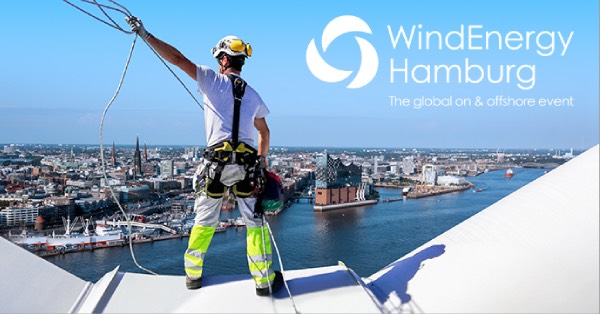In the eleventh edition of the WEtix report, the positive assessments given six months ago for Germany, Europe, North America and Asia remain largely unchanged. Following a slight downturn during the last six-month assessment period, the latest survey shows a minute improvement. Asia and North America in particular are continuing their upward trend while results for Europe and the rest of the world are slightly down. In Germany, the situation in offshore wind has improved while onshore has declined somewhat; however, after the poor assessments seen in past years, the generally positive mood remains intact. For the first time, Australia, South America and Africa, summarily referred to as “rest of world” in this report, take last place.
The importance of training and continued education is seen as very high, especially in the onshore segment. Respondents continue to see high saving potential in new technologies, surprisingly expecting turbine output to further increase significantly.
These are summary results of the new WindEnergy trend:index (WEtix) which has been compiled and published at six-month intervals since 2018. It is published jointly by WindEnergy Hamburg, the global onshore and offshore wind energy event, and wind:research, the leading market research institute for wind energy. More than 500 respondents took part in the current survey between mid-March and end of April 2023, contributing their assessments of the development of the global onshore and offshore wind industry. All in all, more than 10,000 experts have participated in WEtix surveys since 2018. The survey covers all onshore and offshore regions globally. The pre-defined market regions include Germany, Europe (including Germany), North America, Asia and Rest of World (RoW), comprising Africa, Australia as well as Central and South America.
Mood has dimmed slightly across all regions but remains positive
The changes observed since the last edition of the WEtix survey in autumn 2023 are relatively minor compared to the sometimes dramatic changes in previous years. Assessments of the global markets remain quite positive and the mood is generally good for both onshore and offshore wind. In a short-term retrospective especially, all markets are showing improvements. The mood in Germany, having improved steadily from the third quarter of 2019 until the first half of 2022, is stagnating on a very high level compared to earlier years.
The overall mood remains positive: There is no industry segment, time period or region where the mood is declining into the negative quadrant; in the context of all WEtix trend surveys conducted so far, most ratings are still in the medium to upper range. Short-term developments have improved in both, Asia and North America, with both regions maintaining very high levels.
The general conditions for wind energy again received mostly positive assessments. Compared to the previous six-month survey period, some of the assessments are now trending upwards, with only Europe and the rest of the world declining slightly.
High relevance of education and training programmes; concerns about supply chain disruption
While the situation of the wind industry is, by and large, seen in a positive light, the market stakeholders are expressing some concerns. This WEtix again included a question regarding the importance of education and training for the wind industry. The results speak for themselves: This WEtix again reflects wide-spread concerns regarding the availability of skilled labour. More than 66 % of respondents assign high or very high importance to the availability of education and training programmes for wind energy.
After the last issue of this report signalled an end to the period of stagnation in the assessments of saving potential, the latest survey hardly shows a change of opinions.
The question about turbine sizes and power output expected for 2030 for both the onshore and offshore segments, included in this WEtix survey for the first time, addresses the potential for further technological progress. For both segments, respondents expressed expectations of a more or less significant increase of turbine output power, notwithstanding the general opinion voiced by industry experts that growth is finite. This is attributable to hopes that turbine manufacturers will finally enter the profitable zone, which is a necessity in the long term. An average size of 18.8 MW for offshore, and 8.2 MW for onshore turbines would represent an additional significant increase.
WindEnergy Hamburg from 24 – 27 September 2024
Every two years one of the most fascinating industries meets for the leading global networking event for wind energy: At WindEnergy Hamburg, which takes place right in the heart of the vibrant northern German port city, more than 1,400 companies from 40 countries present their innovations and solutions in ten exhibition halls to up to 37,000 participants from 100 different nations. Covering 68,500 m2 across the exhibition campus, equipment manufacturers and suppliers representing all stages of the onshore and offshore wind energy value chain provide a comprehensive overview of the market. Providers of everything from planning and project design to installation, operation and maintenance, and through to marketing, certification and financing take part to showcase their services. The expo is accompanied by conference sessions featuring top-ranking experts who address the industry’s current key topics. The WindEnergy Hamburg team are developing this programme jointly with their partners, including the Global Wind Energy Council (GWEC), the European organisation WindEurope, the national industry associations VDMA and BWE, leading industry media and exhibitors, among others. From 24 until 27 September 2024 all of the conference sessions will take place free of charge on four Open Stages located directly inside the exhibition halls.









































